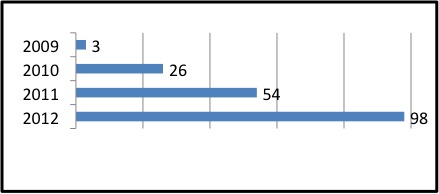The following post is taken from the AUSA’s annual Institute of Land Warfare panel discussion.
Quarterbacks do not win football games. Nor do tight ends, coaches, or even general managers. Rather the team – a partnership working as one – wins games.
Colloquial? Yes. Simple? No.
Forging a team to protect and secure our Homeland is no small matter, either. The Southwest Border (SWB) alone is approximately 1,900 miles long with varying types of terrain – urban, desert, and mountains. So, how does the Department of Homeland Security accomplish such a feat? It takes a whole of community effort - a partnership of federal, state, local, tribal, territorial, private sector, and international team members. One partner in particular is the United States Army.
During a recent visit to Washington, DC, I observed a panel discussion titled “Enhancing North American Security along the Southwest Border (SWB).” Hosted by LTG William Caldwell, commander of US Army North, it was one of many panels during the Association of the United States Army’s (AUSA) annual Institute of Land Warfare conference. It was an open forum to discuss the shared efforts and responsibilities associated with maintaining our way of life and our safety.
The panel members – four in total – represented over 120 years of experience in homeland security and national defense, including the Department of Homeland Security (DHS), Customs and Border Protection (CBP), US Northern Command, and the California National Guard.
What did these gentlemen discuss? How many tanks and snipers to place on our borders? How many helicopters to patrol from the skies along our border? Not even close.
Rather, all the panel members emphasized partnership: one that is required to win the “away” games as well as the “home” games; a broad-based enterprise that leverages unique capabilities of various entities; a partnership that builds trust and confidence among neighboring countries so that they can defeat a common threat.
Protecting the citizens of the North American countries from the negative effects of transnational criminal organizations is not a purely military endeavor. It is a national, hemispheric, and global security issue. In the US, the federal department lead for protecting our borders is the Department of Homeland Security.
But why do we see pictures of soldiers with binoculars scanning remote deserts along the SWB or military personnel walking along side civilian law enforcement? Why do we see our Army National Guard helicopters assisting law enforcement?
The answer is partnership.
While CBP is the lead agency for our border security, they may have gaps or lack depth in a unique capability. They may have shortfalls in their budget. They often have a legitimate requirement to answer a need and have the authority to request support from the military. Likewise, the military has a requirement to conduct training to remain proficient in its skills – be it flying, scouting, or simply exercising its tactical radios. Rather, spending money on contrived scenario-based training, they can achieve the same training objectives while supporting a CBP sector chief. Mutually beneficial exchanges are not only an efficient use of taxpayer dollars, but they allow our soldiers the opportunity to serve their citizens right here in the US.
One intriguing question posed from an audience member was aimed at Al Qaida’s intent on attacking America. Though we all generally accept the fact that Al Qaida intends on attacking us again, we often assume that they are still trying to use aircraft as the main weapon or the primary mode of entry in the US. Yet, the panelists all highlighted the fact that a large percentage of people that attempt to cross the northern or southern US land borders are not from Mexico or Canada. Rather, they come from scores of other places, like Syria. One panelist said he personally saw two Syrians trying to enter a port of entry on the US SWB who were seeking political asylum.
The federal budget and the potential fiscal challenges ahead of us make the news on a daily basis. While budget crunches are generally seen as a negative impact on a government’s ability to provide services, the panelists highlighted a silver lining. When funding streams begin to dry up, you begin to look to your friends on either side of you for help. Federal agencies are no different. Planners in the homeland security entities and law enforcement agencies have begun to forge new relationships and leveraging the efficiencies of partners.
Whether it is budget constraints, law, public policy, or simply an urgent need for a resource, the Army serves as an enabler for those partners who have primacy in the security of our homeland. The mutually beneficial training opportunities gained by our Army while supporting lead agencies along the SWB enhance the Army’s readiness. Our nation’s law enforcement and security specialists have a daily challenge to stay ahead of a versatile and focused threat. Their success in protecting America’s borders and facilitating robust trade is achieved only through maximizing partnerships across the whole of community – on both sides of the SWB.

